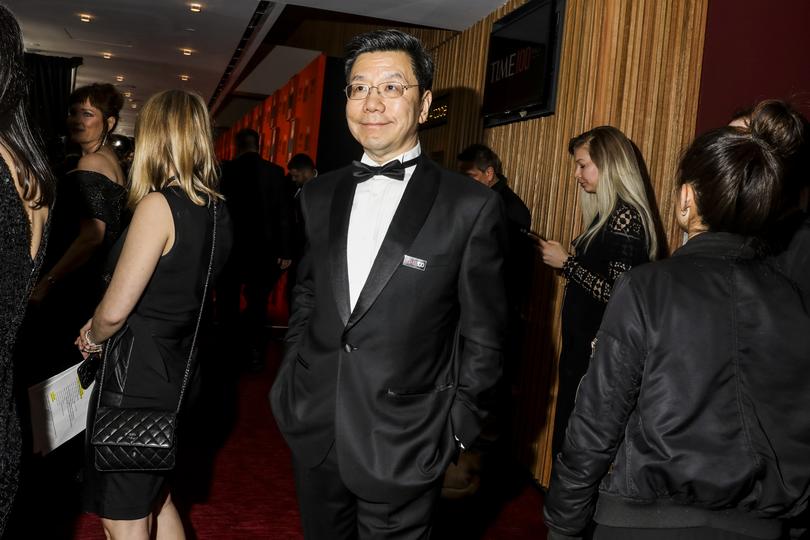THE NEW YORK TIMES: China closing the AI gap with the rest of the world
At the World Artificial Intelligence Conference in Shanghai this month, startup founder Qu Dongqi showed off a video he had recently posted online. It displayed an old photograph of a woman with two toddlers. Then the photo sprang to life as the woman lifted the toddlers up in her arms and they laughed with surprise.
The video was created by AI technology from Chinese internet company Kuaishou. The technology was reminiscent of a video generator, called Sora, that American startup OpenAI unveiled this year. But unlike Sora, it was available to the general public.
“My American friends still can’t use Sora,” Qu said. “But we already have better solutions here.”
Sign up to The Nightly's newsletters.
Get the first look at the digital newspaper, curated daily stories and breaking headlines delivered to your inbox.
By continuing you agree to our Terms and Privacy Policy.While the United States has had a head start on AI development, China is catching up. In recent weeks, several Chinese companies have unveiled AI technologies that rival leading American systems. And these technologies are already in the hands of consumers, businesses and independent software developers across the globe.
While many American companies are worried that AI technologies could accelerate the spread of disinformation or cause other serious harm, Chinese companies are more willing to release their technologies to consumers or even share the underlying software code with other businesses and software developers. This kind of sharing of computer code, called open source, allows others to more quickly build and distribute their own products using the same technologies.
Open source has been a cornerstone of the development of computer software, the internet and, now, artificial intelligence. The idea is that technology advances faster when its computer code is freely available for anyone to examine, use and improve upon.
China’s efforts could have enormous implications as AI technology continues to develop in the years to come. The technology could increase the productivity of workers, fuel future innovations and power a new wave of military technologies, including autonomous weapons.
When OpenAI kicked off the AI boom in late 2022 with the release of the online chatbot ChatGPT, China struggled to compete with technologies emerging from American companies such as OpenAI and Google. (The New York Times has sued OpenAI and its partner, Microsoft, claiming copyright infringement of news content related to AI systems.) But China’s progress is now accelerating.
Kuaishou released its video generator, Kling, in China more than a month ago and to users worldwide on Wednesday. Just before Kling’s arrival, 01.AI, a startup co-founded by Kai-Fu Lee, an investor and technologist who helped build Chinese offices for both Google and Microsoft, released chatbot technology that scored nearly as well as the leading American technologies on common benchmark tests that rate the performance of the world’s chatbots.
New technology from Chinese tech giant Alibaba has also leapt to the top of a leaderboard that rates open-source AI systems. “We have disproved the commonplace belief that China doesn’t have the talent or the technology to compete with the U.S.,” Lee said. “That belief is simply wrong.”
In interviews, a dozen technologists and researchers at Chinese tech companies said open-source technologies were a key reason that China’s AI development has advanced so quickly. They saw open-source AI as an opportunity for the country to take the lead.
But that will not be easy. The United States remains at the forefront of AI research. And U.S. officials have resolved to keep it that way.
The White House has instituted a trade embargo designed to prevent Chinese companies from using the most powerful versions of computer chips that are essential to building artificial intelligence. A group of lawmakers has introduced a bill that would make it easier for the White House to control the export of AI software built in the United States. Others are trying to limit the progress of open-source technologies that have helped fuel the rise of similar systems in China.
The top American companies are also exploring new technologies that aim to eclipse the powers of today’s chatbots and video generators.
“Chinese companies are good at replicating and improving what the U.S. already has,” said Yiran Chen, a professor of electrical and computer engineering at Duke University in North Carolina. “They are not as good at inventing something completely new that will bypass the U.S. in five to 10 years.”
But many in China’s tech industry believe that open-source technology could help them grow despite those constraints. And if U.S. regulators stifle the progress of American open-source projects (as some lawmakers are discussing) China could gain a significant edge. If the best open-source technologies come from China, U.S. developers could end up building their systems atop Chinese technologies.
“Open-source AI is the foundation of AI development,” said Clément Delangue, CEO of Hugging Face, a company that houses many of the world’s open-source AI projects. The U.S. built its leadership in AI through collaboration between companies and researchers, he said, “and it looks like China could do the same thing.”
While anyone with a computer can change open-source software code, it takes a lot of data, skill and computing power to fundamentally alter an AI system. When it comes to AI, open source typically means that a system’s building blocks serve as a foundation that allows others to build something new, said Fu Hongyu, director of AI governance at Alibaba’s research institute, AliResearch.

As in other countries, in China there is an intense debate over whether the latest technological advances should be made accessible to anyone or kept as closely held company secrets. Some, including Robin Li, the CEO of Baidu, one of the few companies in China building its own AI technology entirely from scratch, think the technology is most profitable and secure in the hands of a limited few.
AI systems require enormous resources: talent, data and computing power. Beijing has made it clear that the benefits accruing from such investments should be shared. The Chinese government has poured money into AI projects and subsidized resources like computing centres.
But Chinese tech companies face a major constraint on the development of their AI systems: compliance with Beijing’s strict censorship regime, which extends to generative AI technologies.
Kuaishou’s new video generator Kling appears to have been trained to follow the rules. Text prompts with any mention of China’s president, Xi Jinping, or controversial topics such as feminism and the country’s real estate crisis yielded error messages. An image prompt of this year’s National People’s Congress yielded a video of the delegates shifting in their seats.
Kuaishou did not respond to questions about what steps the company took to prevent Kling from creating harmful, fake or politically sensitive content.
By making their most advanced AI technologies freely available, China’s tech giants are demonstrating their willingness to contribute to the country’s overall technological advancement as Beijing has established that the power and profit of the tech industry should be channelled toward the goal of self-sufficiency.
The concern for some in China is that the country will struggle to amass the computing chips it needs to build increasingly powerful technologies. But that has not yet prevented Chinese companies from building powerful new technologies that can compete with U.S. systems.
At the end of last year, Lee’s company, 01.AI, was ridiculed on social media when someone discovered that the company had built its AI system using open-source technology originally built by Meta, owner of Facebook and Instagram. Some saw it as a symbol of China’s dependence on American ingenuity.
Six months later, 01.AI unveiled a new version of its technology. It now sits near the top of the leaderboard that ranks the world’s best technologies. Around the same time, a team from Stanford University in California unveiled Llama 3-V, claiming it outperformed other leading models. But a Chinese researcher soon noticed that the model was based on an open-source system originally built in China.
It was the reverse of the controversy surrounding 01.AI last year: Rather than Chinese developers building atop American technology, U.S. developers built atop Chinese technology.
If regulators limit open-source projects in the United States and Chinese open-source technologies become the gold standard, Delangue said, this kind of thing could become the norm.
“If the trend continues, it becomes more and more of a challenge for the U.S.,” he said.
This article originally appeared in The New York Times.
© 2024 The New York Times Company
Originally published on The New York Times
